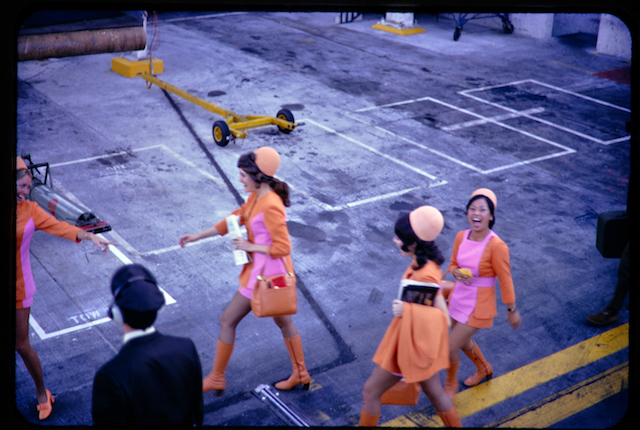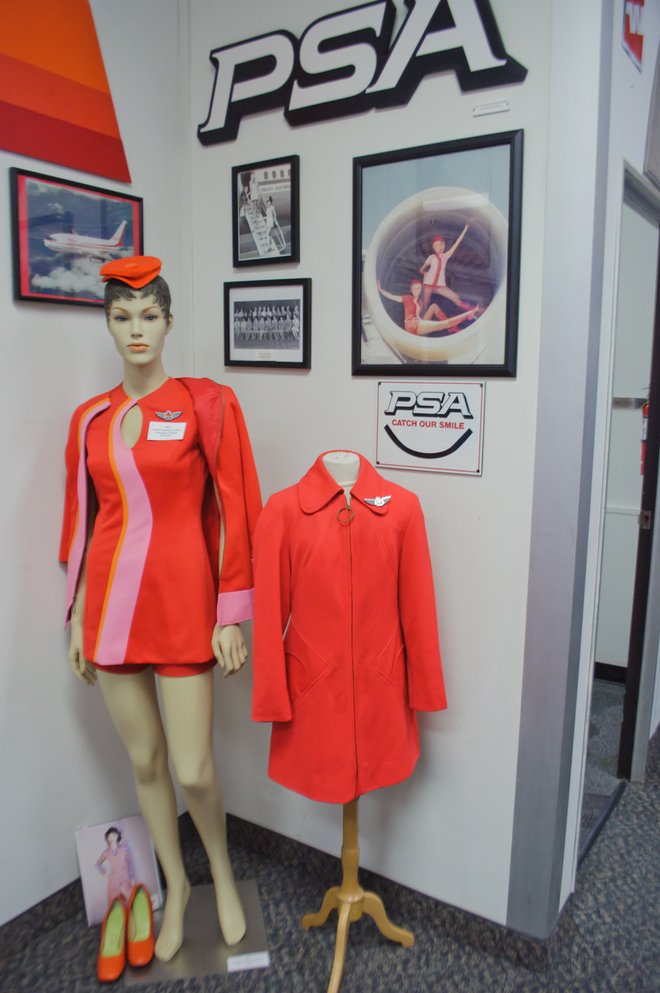Wanted: petite, single women that are 20 to 26 years old. Must weigh between 100 and 118 pounds and be at least five feet, but no taller than five feet, four inches. This was what a recruitment ad seeking potential stewardesses in the 1930s looked like. In fact, a similar one ran in "The New York Times" in 1936. Young women flocked towards these advertisements, but were only considered if they physically fit the bill. It's safe to say that since then, we've come a long way. Today, the industry welcomes a wider range of candidates and flight attendants are viewed much more than merely cocktail waitresses in the sky. Here, we took a stroll down memory lane and compared six major standards within the profession that have changed over the course of history.
Photo courtesy of Flickr/Ryan
Title
While it may have been politically correct to call a flight attendant an air hostess or stewardess sixty years ago, doing so today is frowned upon. The proper term preferred by all flight crew is flight attendant or even better, cabin crew. Over the past six decades, men and women boldly fought to change what constitutes an acceptable attribute of an ideal cabin crew member. What came along with these accomplishments was the reintroduction of male flight attendants, which would forever usher out old-fashioned terms like air hostess and stewardess.
Who Can Apply
Although the world’s first flight attendant was a man named Heinrich Kubis, there were periods in history where male cabin crew simply didn’t exist. In the U.S., the job was one of the few in the 1930s that allowed women to apply. Around this time, international regulatory authorities also imposed general standards of what services airlines could provide for their passengers. As a result of only being able to offer the same amenities, competing airlines began to advertise their flight attendants — women only — as part of the package. Today, men and women with high school diplomas are both invited to apply. They are, however, required to be tall enough to access the safety equipment in the overhead compartments. But physical attributes are no longer allowed to be a factor in the selection process.
Hiring Requirements
Before WWII, airlines mainly hired qualified nurses as flight attendants. Not only were they able to care for passengers on board, but their presence gave travelers the confidence to fly in the first place. Today, however, men and women are hired for being quick learners, eager students, and valuable team players instead of their previous medical training. Recruiters are also always searching for applicants who are friendly and personable plus have a resume that highlights strong customer service skills.
Reasons for Termination
Until 1966, when the first lawsuit was filed against a commercial airline by one of its female employees, airlines reserved the right to fire women the moment they decided to get married. Even more interesting, before the lawsuit, recruiters touted the gig as an opportunity for women to meet their ideal suitors on board. It wasn’t until the late 1960s and early 1970s that women were granted the right to keep their jobs while still getting married or having children. Many airlines even instituted age limits of 32 or 35 and flight attendants above this were terminated or transferred to ground jobs. By 1965, fourteen of the 38 carriers in the U.S. enforced these age restrictions on flight attendants. But by the late 1960s, after major protest, this rule had been amended as well.
Photo courtesy of Flickr/InSapphoWeTrust
Uniforms
In the 1950s, 1960s, and even early 1970s, flight attendant uniforms included short skirts, tight dresses, and impractical footwear. This was meant to appeal to business class passengers, who were mostly male. Today, women on most commercial airlines are allowed to choose the size and description of their uniform based on their own body type. They also have the option to choose between wearing a conservative skirt that stops just above the knee or trousers. Many also carry a comfortable pair of shoes to throw on once the doors close.
In-Flight Responsibilities
Sixty years ago, flight attendants were widely regarded as nothing more than cocktail waitresses in the sky. These days, their responsibilities extend much further than serving snacks and removing trays. All flight attendants undergo rigorous training programs that take weeks to complete. Airlines also legally require all of their crew to be well versed in the standard operating procedures of their specific aircrafts. In addition, they must pass various written and physical tests. This can include everything from how to put out a fire at 35,000 feet to how to cut the umbilical cord of a baby who must be delivered on board. That being said, flight attendants are now considered the aircraft’s designated medics, fire fighters, and more.
Related Stories:
- 6 Tricks from a Flight Attendant That Will Make Your Trip Easier
- 7 Items All Flight Attendants Carry in Their Bags
- What’s Really Happening When Your Flight Experiences Turbulence (And How to Deal With It)
All products are independently selected by our writers and editors. If you buy something through our links, Oyster may earn an affiliate commission.



